
Day Five, November 12 –Our Visit to the South of Israel, Site of the Oct. 7 Attacks
Traveling with an experienced guide and security detail, Rabbi Moshe Krupka, Touro Executive Vice President and I visited several communities that were attacked on October 7. The visit was traumatizing and depressing, but also hopeful in a way. We stopped first in Sderot, a town of over 40,000 people that lies just one kilometer from the Gaza border and that was devastated by the attack of October 7.
We saw videos from the local civic security system’s cameras covering major parts of the city. In addition, we saw footage from body cameras worn by terrorists who were subsequently neutralized. The images were horrific beyond belief—the indiscriminate killing of civilians, including children and the butchering of bodies. This was not a war or military attack. This was mass murder, a true crime against humanity.
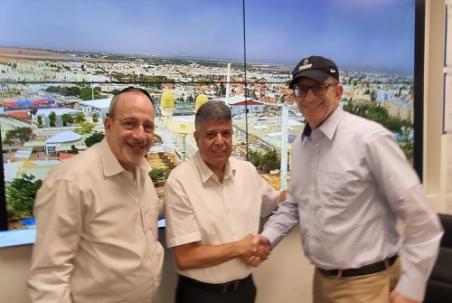
We met with a member of the Knesset, or Israeli Parliament, who happened to be there on October 7. He and several others were armed with only small pistols, while the Hamas terrorists were in full military gear with grenades. They brought machine guns and rocket-propelled grenades as well. The only way to describe the killing was inhuman. We saw a police station that was destroyed by the Israeli army, after it had been overrun by terrorists. Bullet holes as evidence of explosions were present in many residential areas.
We spoke to one individual who was on duty at the local town center on October 7. He described getting phone calls from people seeing terrorists outside but having no way to respond. No one had ever contemplated intentional mass murder of civilians, and there was no contingency plan for this situation.
Red alerts, indicating additional indiscriminate missile firing were present during our trip. This limited some of our travel plans, although we were lucky enough not to ever have to enter a shelter or lie flat on the ground.
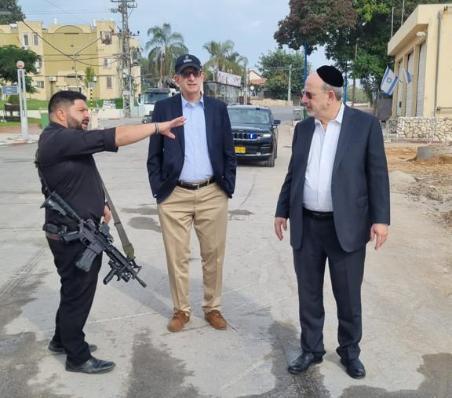
This is not my first experience with red alerts. Several years ago, while giving a lecture at a local school, I sprinted into a bomb shelter with a group of Israelis and delivered my lecture there. Although there were relatively few casualties from rockets compared with the mass murder, the idea that rocket firing into civilian areas indiscriminately can somehow be normalized as it has been by many around the world is inhumane and appalling.
We then visited another settlement several kilometers from Gaza where two truckloads of terrorists entered a civilian neighborhood, burst into homes and started shooting indiscriminately. Forty-eight people were killed, including several police officers, who tried to take on the heavily arm terrorist with only their pistols. This community was saved by an elderly woman who served dessert for the terrorists while they were in her house for over 12 hours. She was subsequently rescued by Israeli police. Others survived by hiding on the roof while members of their families were killed. Posters in the middle of the residential neighborhood commemorate those who were killed at each street corner.
We stopped at a bomb shelter recently featured in a New York Times news story by Isabel Kershner. The shelter was small and crowded with refugees from the music festival that was attacked by Hamas. It was riddled with bullet holes, and there was evidence of multiple grenade explosions. In some cases, those trapped in the shelter threw grenades back out, and we could see those areas where the grenades exploded. Terrorists simply gunned down the mostly young innocent civilians and took others hostage. A number of New York Times readers commented on Isabel Kershner’s article. It was refreshing to note that almost uniformly, they recognized the fallacy in attempts to draw a moral equivalent between Hamas terrorists who intentionally bombed and shot civilians in a shelter and the Israelis’ accidental killing of civilians who are being used by terrorists as human shields. Readers hearing about the nature of Hamas’s crimes against humanity recognized that Israel must do what it can to eliminate Hamas.
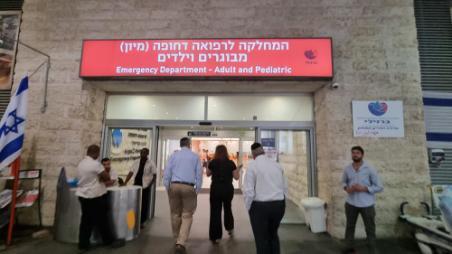
We then visited the major hospital in the city of Ashkelon, just several kilometers from the Gaza border. The 500+ bed hospital has been hit by 4 rockets and sections were destroyed and are now being rebuilt. Patients were transferred into 269 bomb shelter beds, where they're being treated in wards. The assistant director general of the hospital, who gave us a tour, was on duty on October 7. She described how she was responsible for ensuring patients’ care after triage. Some could be sent to the basement bomb shelter and others were transferred to other hospitals.
Hundreds of seriously wounded patients were evaluated every day for the first few days after October 7. Besides the physical wounds, those admitted as well as the staff and other residents are suffering from severe PTSD.
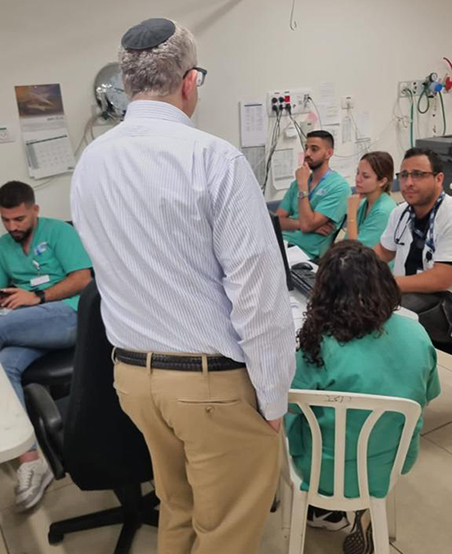
As an internist and cardiologist, I was interested in seeing how medical education was progressing through this traumatic episode. I asked a group of residents to present a case or two to me. The group consisted of three Arabs and three Jews. They proudly presented a case of thrombotic thrombocytopenic purpura that was successfully treated with plasmapheresis.
Collaboration between Arab and Israeli trainees was casual and mutually respectful. What we saw today as well as the way Israeli hospitals operate in general is one of the clearest demonstrations that accusing Israel of apartheid is absurd.
Finally, we visited United Hatzalah, a motorcycle-based emergency healthcare response system that mobilizes 7000 volunteers quickly to help those in need of emergency assistance. They provide stopgap care until ambulances are able to arrive. Their high-tech center was incredibly impressive. However, equally depressing was that in the few minutes we were there, there were several red alerts for the continued indiscriminate rocket fire into Israel from both Hamas and Hezbollah.
We all continue to hope for peace although it seems far off. We read some encouraging preliminary reports about a deal to release some of the 240 hostages or almost all civilians held by Hamas, but we have heard these reports before, and so far, only 6 hostages have been released. Finding a long-term solution that respects the rights of everyone in the area has been challenging. I have no easy answers. Today's experience reinforced that barbaric terrorism must be eradicated, and that we must find a better way to live with mutual dignity and peace. Only by eliminating the perpetrators of terror is there any hope for that to happen.
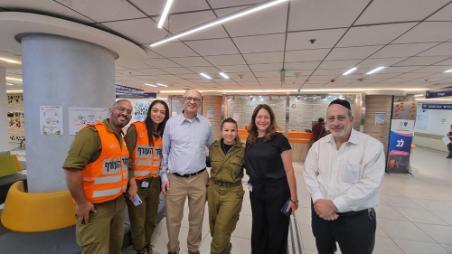
The casualties in Gaza have received a great deal of publicity. For those who have not personally experienced the horror of what Hamas did, I think we need to do a better job of education. There is no moral equivalence between those who commit mass murders and mutilate bodies and those who attempt to root out terrorism. Israel has certainly not committed genocide when the facts are that the population of Gaza has grown dramatically in the past two decades, and when the IDF makes every attempt to separate Palestinian civilians from terrorists. It has not always been successful. I'm hopeful that education can bring people to understand that accusing Israel of apartheid and genocide bears no relationship to the reality on the ground. That said, we need to ensure that patients in the hospitals receive adequate care, that civilian casualties are minimized, and that we strive for a better life for everyone. It won't happen easily, but we have to continue to hope for a better future.

